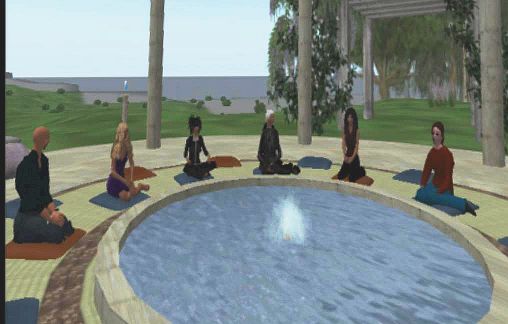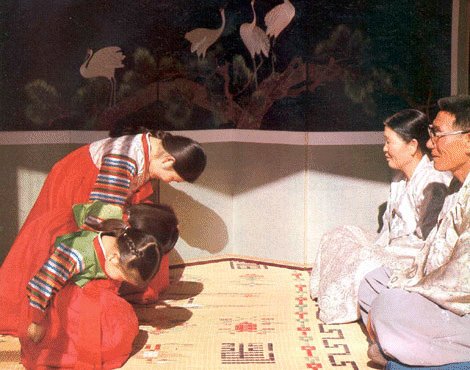The names of our sims
Table of contents
No headersBuyeo(Hangeul 부여; Hanja 夫餘)
An ancient Korean kingdom located in today's southern Manchuria and North Korea, from around the 2nd century BC to 494. Its remnants were absorbed by the neighbouring kingdom of Goguryeo in 494. Both Goguryeo and Baekje, two of the Three Kingdoms of Korea, considered themselves its successor nation.

http://en.wikipedia.org/wiki/Buyeo_kingdom
Mugunghwa (Hangeul 무궁화, Hanja 無窮花)
Hibiscus syriacus (syn. Althaea frutex Hort. ex Mill.), the common garden Hibiscus, is called Rose of Sharon in North America, a name also applied to other plants. Hibiscus syriacus is the national flower of South Korea. The flower appears in national emblems, and Korea is compared poetically to the flower in the South Korean national anthem. The flower's symbolic significance stems from the Korean word mugung, meaning "immortality".
http://en.wikipedia.org/wiki/Hibiscus_syriacus
Pogon (Possibly an old spelling of Pogeun 포근)
Pogeun: 1. Soft and comfortable; downy; fluffy, 2. mild; warm, 3. comfortably warm; cosy; snug
Paduk or Baduk (Hangeul 바둑)
Go is a strategic board game for two players. It is known as wéiqí in Chinese (Traditional: 圍棋; Simplified: 围棋), igo (囲碁, igo?) or go (碁, go?) in Japanese and baduk in Korean). To differentiate it from the common English verb to go, it is sometimes capitalized. An alternate spelling is also used occasionally. Go originated in China, where it has been played for at least two thousand years. It is most popular in East Asia, but has gained some popularity in the rest of the world in recent years. Go is noted for being rich in strategic complexity despite its simple rules.

http://en.wikipedia.org/wiki/Paduk
Seonggye (Perhaps referring to the first king of Joseon dynasty, Yi Seonggye, Hangeul 이성계 Hanja 李成桂 Reign 1392 – 1398)
Born to a family of military officials during the Goryeo dynasty (918 - 1392), Yi Seonggye gradually gained respect and popularity amongst the public as well as the gentry because of his legendary bravery and continued victories in battles.
With the Ming dynasty (1368 - 1644) replacing the Yuan dynasty (1271 - 1368) in China,
As the tension between supporters of the Yuan dynasty and those of the Ming within the court mounting, by 1388 Yi decided to mount a coup and installed a new emperor. After removal of remaining supporters in 1392, Yi became the first king of Joseon dynasty. Unlike the Goryeo dynasty that supported Buddhism, the official ideology of the Joseon dynasty was Confucianism.

http://en.wikipedia.org/wiki/Taejo_of_Joseon
http://ko.wikipedia.org/wiki/%EC%A1%B0%EC%84%A0_%ED%83%9C%EC%A1%B0
Solbim (Possibly an old spelling of Seolbim, Hangeul 설빔)
The New Year’s best (clothes). Traditionally during autumn, fabrics were selected and new outfits were being prepared in advance for the New Year’s Day.

Visiting and greeting relatives on the New Year’s Day, wearing the best (Hanbok, traditional Korean costumes) http://kdaq.empas.com/qna/view.html?n=6419062
Chokki (Japanese word for Jokki, Hangeul 조끼)
Jokki refers to men’s vest or waistcoat, introduced to Korea during Japanese colonial period. For Hanbok (traditional Korean costumes), Jokki can also mean a waistcoat like piece of clothing, called Baejamagoja that was developed around 1900 under the western influence.
http://blog.joins.com/media/index.asp?page=9&uid=altx124&folder=0&page_size=5
Magoja (or Magwaeja, Hangeul 마고자 or 마괘자 (馬褂子)
A piece of Korean traditional clothing worn over the jacket as an outer coat. Originally men’s winter coat from Manchuria, it was introduced to Korea by a Korean prince in 1887 who returned from his Manchurian exile. Variations for spring and autumn were developed also and it quickly became popular for both Korean men and women.

http://www.lifeinkorea.com/Culture/Clothes/clothes.cfm?xURL=male
Chongno (Possibly an old spelling of Jongno, Hangeul 종로, Hanja 鐘路)
Jongno (‘Bell Street") is one of the oldest major east-west thoroughfares in central Seoul, South Korea, connecting Sejongno to Dongdaemun. It remains one of Seoul's most important financial and cultural areas to this day. Many important landmarks are located along its length, including the Bigak pavilion at Sejongno, the Bosingak belfry (hence the street's name), Tapgol Park (Pagoda Park), the Jongmyo royal ancestral shrine, and the aforementioned Dongdaemun (Great East Gate). Seoul Subway Line 1 passes under Jongno. The western end of Jongno is serviced by Gwanghwamun Station (Seoul Subway Line 5), and Jongno 3-ga Station is serviced by Subway Lines 1, 3, and 5.

http://kdaq.empas.com/knowhow/view.html?num=169834
http://en.wikipedia.org/wiki/Jongno
BaikUn (Hangeul 백운, Hanja 白雲)
Literally means white clouds, perhaps referring to the pen name of Yi Gyubo (Hangeul 이규보, Hanja 李奎報), BaikUnGeoSa (Hangeul백운거사, Hanja 白雲居士). Yi (1168 – 1241) was a civil minister and a writer from the Goryeo period, especially famous for his cantos.

http://kr.blog.yahoo.com/ganghwaro/20217.html?p=1&t=3
Ulreung (Uleung island, Hangeul 울릉도, Hanja 鬱陵島)
Ulleungdo (also spelled Ulreungdo) is a South Korean island in the Sea of Japan (East Sea). Formerly known as Dagelet to the Europeans, Ulleungdo is about 120 km (75 mi) east of the Korean Peninsula. Volcanic in origin, the rocky steep-sided island is the top of a large stratovolcano which rises from the seafloor, reaching a maximum elevation of 984 metres (3,228 ft) at Seonginbong Peak. The island consists primarily of trachyandesite rock. A major explosive eruption about 9,350 years ago reached a Volcanic Explosivity Index of 6 and deposited tephra as far as central Honshū over 800 km (500 mi) away, while producing pyroclastic flows on the island and decapitating its top to form a caldera.

http://en.wikipedia.org/wiki/Ulreung
Digeut (ㄷ, [d]) Rieul (ㄹ, [l] or [r]) Bieup (ㅂ, [b])
Consonants of the native alphabet of the Korean language (Hangeul), as distinguished from the logographic Sino-Korean hanja system. It is the official script of North Korea, South Korea and the Yanbian Korean Autonomous Prefecture of China. Hangeul is a phonemic alphabet organised into syllabic blocks. Each block consists of at least two of the 24 Hangul letters (jamo), with at least one each of the 14 consonants and 10 vowels. These syllabic blocks can be written horizontally from left to right as well as vertically from top to bottom in columns from right to left. Originally, the alphabet had several additional letters (see obsolete jamo).
http://en.wikipedia.org/wiki/Korean_language
Boksik (Hangeul 복식, Hanja 服飾)
Dress and its ornament
